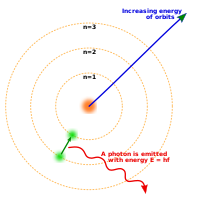
Photo from wikipedia
OBJECTIVE To simulate the clinical reasoning of doctors, retrieve analogous patients of an index patient automatically and predict diagnoses by the similar/dissimilar patients. METHODS We proposed a novel patient-similarity-based framework… Click to show full abstract
OBJECTIVE To simulate the clinical reasoning of doctors, retrieve analogous patients of an index patient automatically and predict diagnoses by the similar/dissimilar patients. METHODS We proposed a novel patient-similarity-based framework for diagnostic prediction, which is inspired by the structure-mapping theory about analogy reasoning in psychology. Patient similarity is defined as the similarity between two patients' diagnoses sets rather than a dichotomous (absence/presence of just one disease). The multilabel classification problem is converted to a single-value regression problem by integrating the pairwise patients' clinical features into a vector and taking the vector as the input and the patient similarity as the output. In contrast to the common k-NN method which only considering the nearest neighbors, we not only utilize similar patients (positive analogy) to generate diagnostic hypotheses, but also utilize dissimilar patients (negative analogy) are used to reject diagnostic hypotheses. RESULTS The patient-similarity-based models perform better than the one-vs-all baseline and traditional k-NN methods. The f-1 score of positive-analogy-based prediction is 0.698, significantly higher than the scores of baselines ranging from 0.368 to 0.661. It increases to 0.703 when the negative analogy method is applied to modify the prediction results of positive analogy. The performance of this method is highly promising for larger datasets. CONCLUSION The patient-similarity-based model provides diagnostic decision support that is more accurate, generalizable, and interpretable than those of previous methods and is based on heterogeneous and incomplete data. The model also serves as a new application for the use of clinical big data through artificial intelligence technology.
Journal Title: International journal of medical informatics
Year Published: 2020
Link to full text (if available)
Share on Social Media: Sign Up to like & get
recommendations!